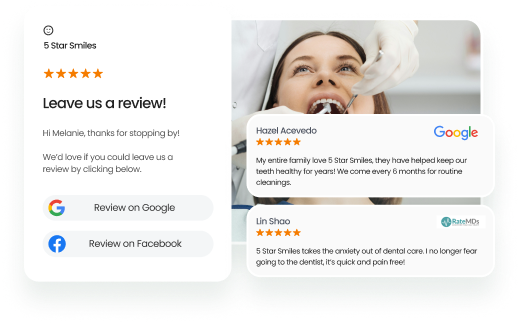Attraction marketing is built for the moment we’re in—where customers don’t want to be pitched, pressured, or pushed. They want answers. They want proof. And they want to decide on their terms, not yours.
If your ads are getting skipped, emails ignored, and posts fall flat, it’s not your product or service—it’s your approach. What customers want now is value first—real help, not hype.
That’s what attraction marketing delivers. It creates valuable content that solves a problem, offers a behind-the-scenes look that builds connection, or presents a point of view that positions you as the expert. All of these increase online presence, so when someone is ready to buy, they already trust you.
In this blog, you’ll learn how to build an attraction marketing strategy that turns browsers into qualified leads without chasing them. From storytelling to content formats, automation to execution—we’ll show you how to make it all work for your products or services.
💡Customers don’t want to be sold to—they want to be shown why you’re worth their time
The smartest brands aren’t louder. They’re more helpful. The right attraction strategy doesn’t feel like marketing. The best attraction marketing campaigns don’t manipulate—they educate. They work because the brand has something worth paying attention to—and knows how to show it.
Read on to learn how to attract customers through intent-driven storytelling across your marketing channels and how GenAI tools can help you implement attraction marketing that builds trust and makes it easier for the right customers to find.Table of contents
- What is attraction marketing?
- 5 benefits of attraction marketing
- Attraction marketing tips: Core principles you need to master
- How to build an attraction marketing strategy that converts
- Attraction marketing examples: 4 brands doing it correctly
- Scale attraction marketing in 2025 with Birdeye GenAI tools
- FAQs about attraction marketing
- Birdeye makes attraction marketing formula scalable and smart
Word of wisdom: You can’t hack trust—but you can earn it faster when you use attraction marketing strategy the right way.
What is attraction marketing?
Attraction marketing is a brand strategy that creates and shares content that speaks directly to its audience’s needs before ever asking for a sale. Instead of leading with a pitch, you lead with value. The goal is to attract customers by educating, entertaining, or solving a problem they already care about.
At its core, this approach is about earning attention by becoming useful. You build a reputation that positions your brand as a trusted source—so when your audience is ready to buy, they already know you, like you, and trust you.
Birdeye also practices attraction marketing by offering industry reports, customer experience data, helpful product demos, and educational content that helps businesses improve their online reputation management.
Instead of pushing features, Birdeye showcases valuable content that builds credibility with its target audience before starting a sales conversation.
The key to making this work is to know your buyer persona inside and out. Understand what they’re searching for, where they’re stuck, and how your content can provide a solution.
That’s the attraction marketing formula—educate first, earn trust, and let your offer speak last.
When you use attraction marketing effectively, your marketing efforts feel more like mentorship than manipulation. You shift from noise to value. From chasing leads to creating demand.
Now that we’ve unpacked what attraction marketing really is, let’s look at why it works so well. Beyond clever content and brand awareness, there’s a deeper psychology at play. The best attraction marketing efforts build emotional connection, foster trust, and drive long-term loyalty—often without ever feeling like a “campaign” at all.
5 benefits of attraction marketing
When done right, attraction marketing doesn’t just capture attention—it earns it. That’s why it works: people trust brands that help them before trying to sell them something. It’s about building emotional connections and guiding potential customers through the decision-making process at their pace—not yours.
Think of brands like Glossier or Patagonia, which focus on community and values first and sales second. Their audiences don’t just buy once—they become advocates. Let’s look at some of the benefits in detail:
1. Build emotional connections that last
Attraction marketing helps you create emotional connections by showing empathy before expertise. It humanizes your message and positions your brand as a partner, not a pitch machine. This is especially effective when you use personal stories to make your message relatable.
2. Attract better potential customers
When you lead with valuable information, you don’t just generate more leads—you generate qualified leads. The right kind of content filters out low-intent traffic and draws in people aligned with your message, values, and offerings.
3. Strengthen brand loyalty organically
Helpful content builds trust. Trust builds repeat behavior. Over time, this kind of consistent value helps you build brand perception. This outlasts one-time campaigns, especially if you deliver value consistently across your marketing channels. Loyal customers don’t just return; they become repeat customers and bring others.
4. Lower acquisition costs through organic discovery
Good attraction marketing campaigns do the heavy lifting for you. When people find your content via search, social, or referral, you’re not paying to get in front of them—they’re finding you. That means fewer ads and a better return on your marketing campaigns.
5. Give small businesses a competitive edge
For small businesses also, this strategy levels the playing field. You don’t need a massive budget—just a clear message, consistent effort, and the right tools. With the help of marketing automation for small businesses, even lean teams can publish content at scale, respond faster, and stay visible. A few well-placed blog posts, instructional videos, or social media series can outshine a big-budget ad that says nothing.
Understanding the benefits is one thing—knowing how to put attraction marketing into practice is another. The best strategies aren’t random posts or one-off ideas. They’re built around a few core principles that guide how you show up, share, and connect with the right people at the right time.
Attraction marketing tips: Core principles you need to master
To implement attraction marketing effectively, you need more than just good content—intention, clarity, and consistency. These principles separate a scattered content calendar from a powerful marketing strategy that actually builds trust and drives results.
Whether you’re building a personal brand or managing a team’s strategy, these are the fundamentals that keep your efforts aligned with what your audience truly wants:
1. Lead with your personal brand—not your product
People connect with people. Whether you’re a founder, creator, or marketer, your personal brand is often more relatable than your business logo. Your brand strategy must echo your voice, values, and personality to build familiarity and trust with your audience.
Example: Elyse Myers (@elyse_myers on TikTok)
A former copywriter turned content creator, Elyse built her personal brand by sharing personal stories, relatable humor, and a touch of vulnerability. She now partners with brands like Adobe—but her audience connects to her, not the brand.
2. Educate before you sell
Educational content is the backbone of any strong attraction strategy. Think blog posts, how-to videos, short tutorials, or quick guides—anything that helps your audience solve a problem or learn something new by addressing their pain points early. You’re building authority without asking for anything in return—offering practical value that speaks directly to potential customers’ real-world needs.
Example: Notion’s YouTube Channel
Notion shares beginner-friendly tutorials, workflow templates, and how-tos before pitching features. Their educational content brings in traffic, builds trust, and turns viewers into users.
3. Create content that solves, not just sells
The goal isn’t to pump out content. It’s to create content that answers real questions, eases friction in the buyer’s journey, or simply makes someone’s day better. This is where content marketing shines—turn your knowledge into helpful long-form content resources.
Example: Glossier’s blog + Instagram
They post skincare routines, customer spotlights, and problem-solving product guides. Glossier’s strategy makes content part of their customer support—without the hard sell.
4. Consistency builds recognition—and results
You don’t need to be everywhere. But you do need to show up often, especially on the social media platforms where your audience already spends time. A few strong formats published regularly will outperform inconsistent, one-hit-wonder content.
Example: Duolingo on TikTok
Their consistent character-based TikToks (featuring the Duolingo owl) don’t sell the app—but the brand recognition is off the charts. They post often, stay on trend, and get millions of views.
5. Start conversations, not just campaigns
Real traction comes from interaction. Comments, replies, shares—they’re all social media engagement signs that your message is resonating. Use your blog, emails, and social media to spark conversation and invite feedback.
Example: Canva on LinkedIn
Canva invites feedback, shares community stories, and asks users to vote on features. This makes their marketing channels a two-way conversation.
With the core principles in place, it’s time to translate them into a plan you can actually run with. A great strategy doesn’t start with content—it starts with clarity. Who are you trying to reach? What do they care about? And how can you show up with something they’ll want to engage with?
Let’s walk through how to build an effective attraction marketing strategy that not only connects—but converts.
How to build an attraction marketing strategy that converts
Building a strategy around attraction marketing means thinking long-term: earning attention now to create future value. You’re designing for trust, not just traffic. Before diving into execution, here are a few attraction marketing tips that will keep your strategy relevant. Here’s how to do it step by step:
Start with your ideal customer, not just your product
Before you write a word of content, map your ideal customer. What are their pain points, values, habits, and hesitations? The more you understand them, the easier it is to create messages that attract the right audience members—not just more views.
Use storytelling as your core messaging tool
Ditch the pitch deck. Your brand voice should sound like a trusted guide, not a billboard. Whether you share Instagram marketing tips or deep dives in newsletters, storytelling turns content into connection.
Bonus: it naturally repels the wrong fit and pulls in new customers who align with your target audience profile and values.
Attraction Marketing Builds Trust That Customers Can Feel
Want to see the impact of Birdeye on your business? Watch the Free Demo Now.
Share value across the funnel—not just the top
Don’t stop at awareness. To create a truly winning strategy, offer quality content that speaks to every stage of the sales funnel. Content that nurtures existing leads into paying customers—like demos, case studies, or ROI calculators—is just as important as what brings them in.
Balance long-form content with short-form hooks
Long-form content builds authority, while short-form gets attention. The sweet spot? Use short-form (like Reels or carousels) to spark interest, then link to supporting long-form content like blogs or deep-dive guides to nurture serious leads.
Layer in inbound marketing techniques for compounding returns
Your best-performing content won’t be promotional—it’ll be discoverable. Use marketing core principles like optimizing for local SEO, internal linking, and writing topical authority content to ensure your brand attracts over time. This is the backbone of any inbound marketing strategy.
Turn content into a lead-generation engine
The goal isn’t just engagement—it’s lead generation. Add clear CTAs, lead magnets, quizzes, or freebies at key touchpoints to convert potential customers into leads you can nurture. From there, nurture leads with email marketing flows tailored to your target audience and stage in the funnel.
With the right mix of digitial marketing tactics of storytelling, SEO, and segmentation, your attraction marketing plan becomes a sustainable engine for growth—not just a one-time campaign. But a strategy is only as good as its execution.
From global brands to solo creators, the most successful attraction marketing campaigns share one thing in common: they lead with trust, not a sales pitch.
Let’s look at a few brands that have nailed the approach—and what you can learn from them.
Attraction marketing examples: 4 brands doing it correctly
The best way to understand how attraction marketing works is to see it in action. These brands aren’t shouting for attention—they’re drawing customers in with relevant, personal, and trustworthy content.
Each example below shows how different strategies—built around community, storytelling, or education—can fuel a successful attraction marketing campaign with clarity and intention.
1. Duolingo: Letting personality drive performance
Duolingo’s TikTok is a masterclass in turning a brand mascot into a viral content machine. Their consistent use of humor, trendjacking, and storytelling builds familiarity without a direct sale. This boosts brand salience by making their mascot instantly recognizable and memorable. It’s funny, relatable, and unmistakably Duolingo.
Why it works: It’s not about the app but about making language learning fun and social. Their content attracts new customers by blending humor with brand relevance.
2. Glossier: Community-powered content with staying power
Glossier’s brand reputation management is one of the most aspirational examples. Do you know why? Because it relies heavily on user-generated content—customer selfies, skincare routines, and personal reviews power much of their social feed. Their Instagram isn’t a product catalog—it’s a lifestyle mirror for their audience.
Why it works: Glossier promotes a message that beauty is personal. They turn their existing customers into advocates, building trust through the community’s voice.
3. HubSpot: Inbound done right
HubSpot’s content flywheel is the gold standard for inbound marketing, from free tools to templates and thought leadership. Their blog posts, videos, and emails are packed with helpful tips and resources tailored to each stage of the funnel.
Why it works: Instead of hard selling, HubSpot earns attention by helping its target audience succeed. Their campaign isn’t a one-off—it’s a living ecosystem of brand content.
4. Canva: Content creation for creators, by creators
Canva leverages tutorials, community spotlights, and downloadable templates to engage and retain its user base. They also promote brand content through LinkedIn conversations, feedback requests, and design challenges.
Why it works: Canva doesn’t just showcase product features—it shows what users can create with them. That shift turns marketing into empowerment. Their strategy hinges on relevant content that empowers users to take action—while reinforcing Canva’s core brand value: design for all.
These brands also succeed because they don’t rely on one channel—they embrace omnichannel marketing to meet their audience wherever they are, with a consistent and helpful brand voice. But scaling it manually can quickly become overwhelming.
That’s where the right tech stack matters. And for enterprises that want to turn insights into action faster, Birdeye has a solution.
Scale attraction marketing in 2025 with Birdeye GenAI tools
In 2025, attraction marketing aims not only to attract leads but to sustain meaningful engagement—well beyond the first click. To run an effective attraction marketing strategy, you need more than just content—you need the right signals, speed, and systems.
That’s where Birdeye’s customer engagement platform helps you turn everyday customer feedback, reviews, and content into marketing gold. Here’s how the platform supports smarter, scalable attraction marketing:
Reviews AI: Build trust with content that writes itself
Birdeye’s Reviews AI helps you uncover exactly what customers love (or don’t)—and generates summaries and snippets that feed your next piece of content. It transforms reviews into attraction marketing messages that resonate with your ideal customer—and helps retain customers by addressing feedback fast.
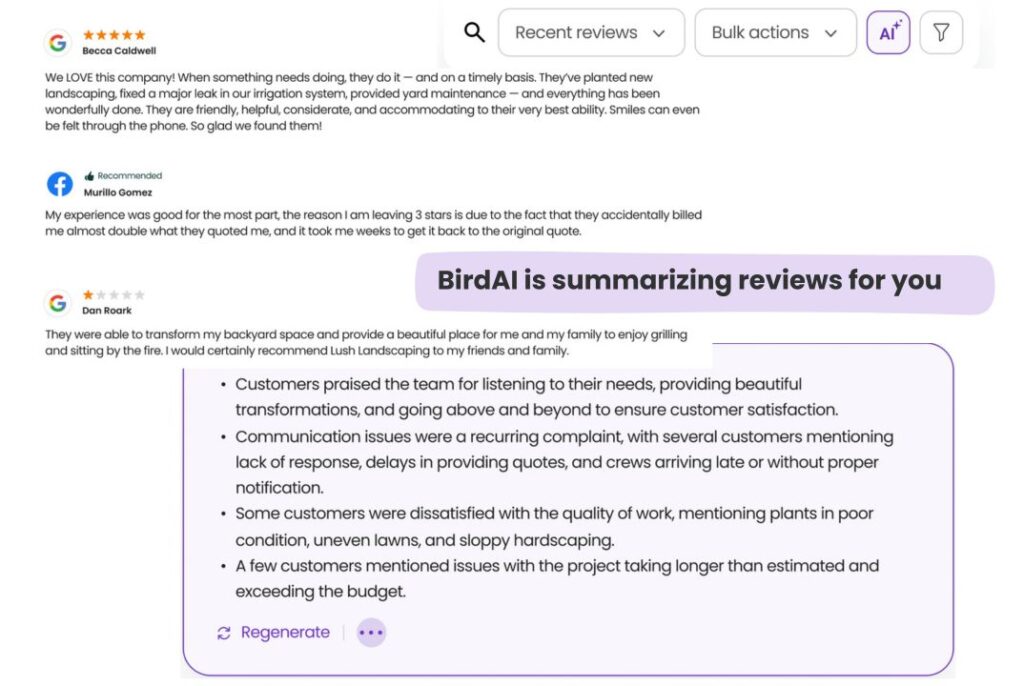
Social AI: Automate content creation for every channel
Stuck on what to post? Birdeye’s Social AI instantly helps you create content and captions based on customer sentiment, trends, or review highlights. Whether it’s short-form posts or templates for long-form content, Social AI helps any online business stay consistent without sacrificing creativity.
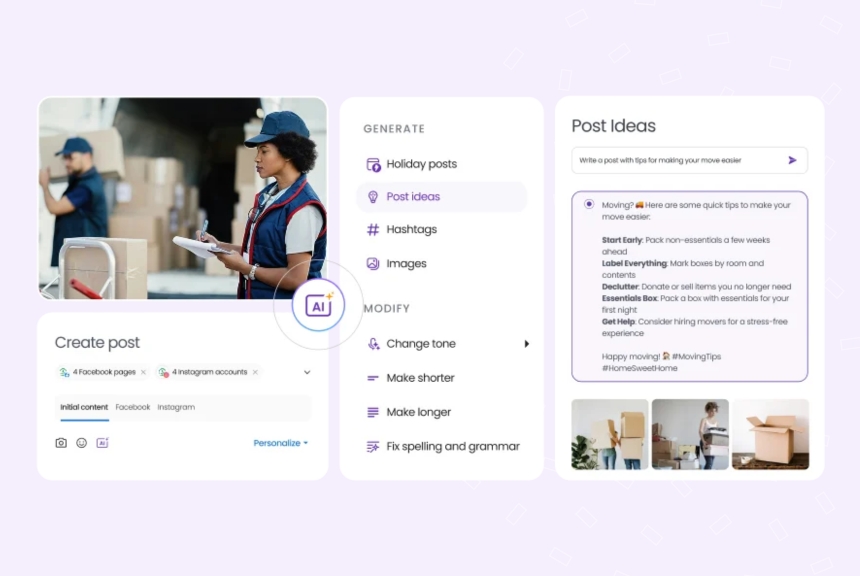
Insights AI: Tailor your message for every audience segment
Stop guessing what will land. With Insights AI, you can analyze review trends and customer sentiment to refine your messaging by location, service, or buyer group. That means no more generic posts—just attraction marketing messages that feel personal, timely, and relevant to different audience members.
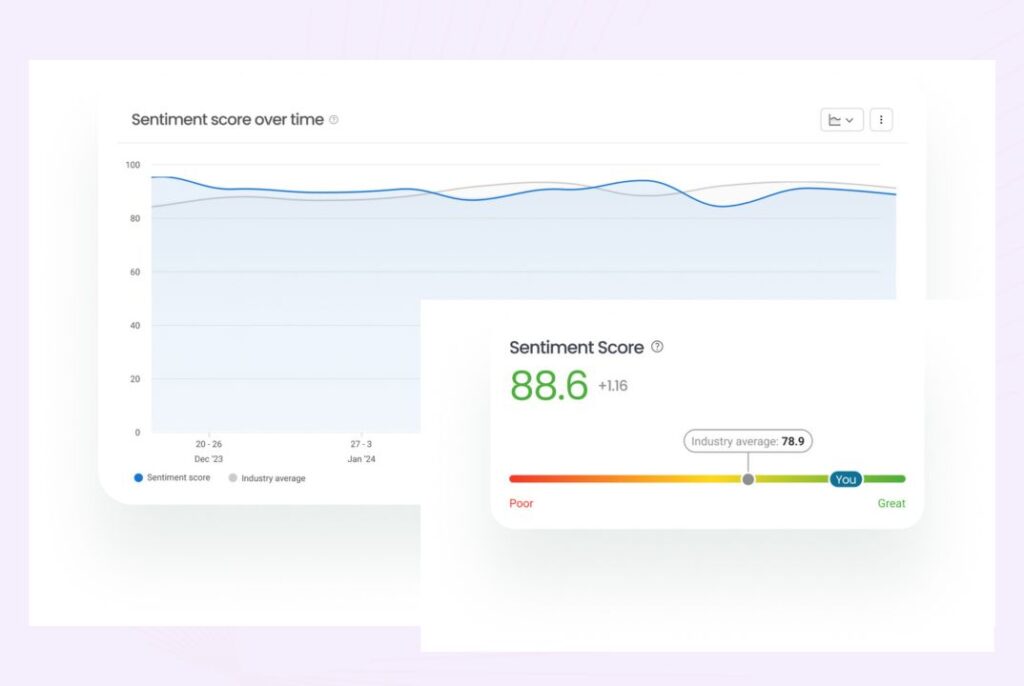
Survey AI: turn feedback into fuel
Your existing customers are often your best content source. With Surveys AI, you can collect insights at scale and turn them into campaign-worthy learnings. Use the built-in analytics and free tools to spot patterns, summarize sentiment, and create helpful follow-up content that keeps people engaged.
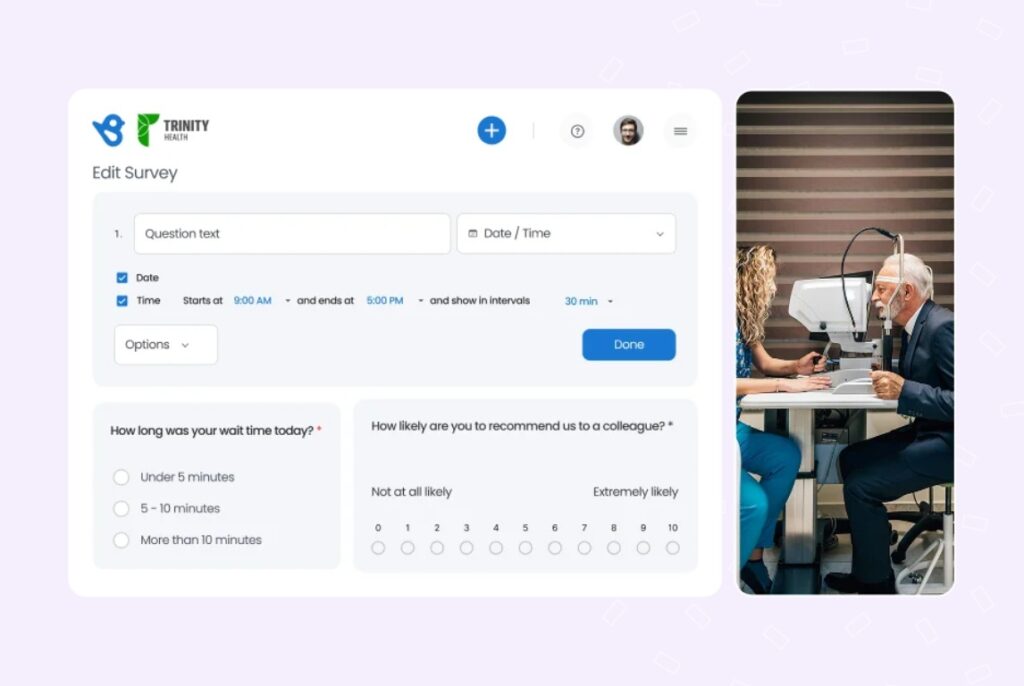
Listing AI: attract more visibility from day one
You can’t attract if you’re not discoverable. Listings AI helps your business rank higher in local search by optimizing profiles on Google Business Profile, Apple, Bing, Facebook, and industry-specific directories. It enhances your search engine optimization, drives traffic from discovery to conversion, and helps you draw in customers consistently.
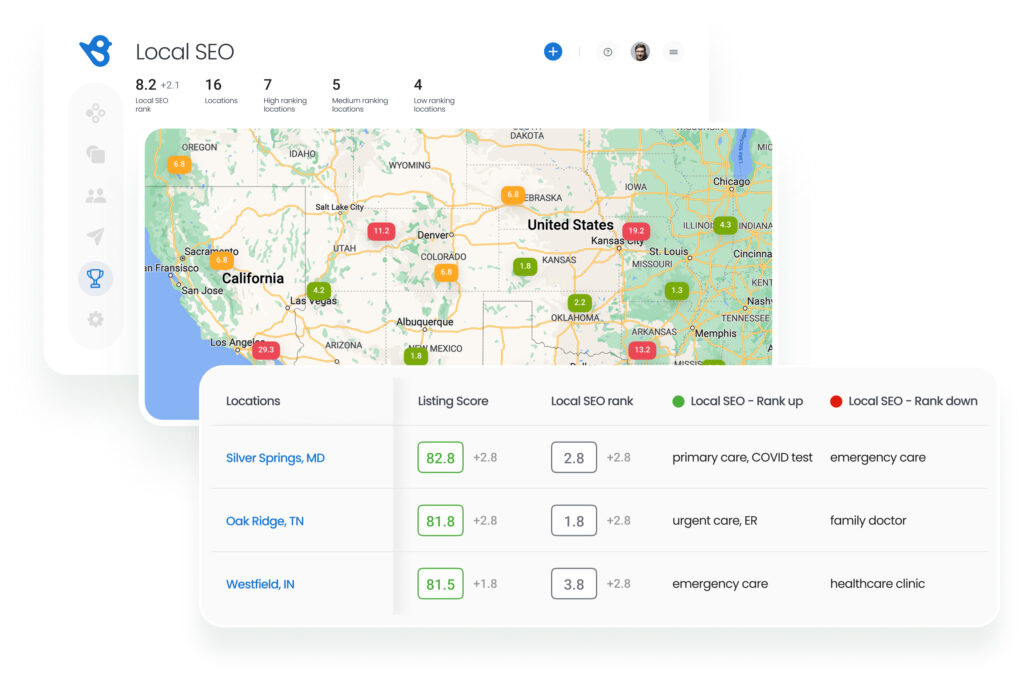
Competitors AI: outshine the rest, strategically
Attraction marketing is about differentiation—and Competitors AI gives you the intelligence to do it right. Track what your competitors post, see how their content performs, and uncover gaps to craft a winning strategy that positions you above the noise.
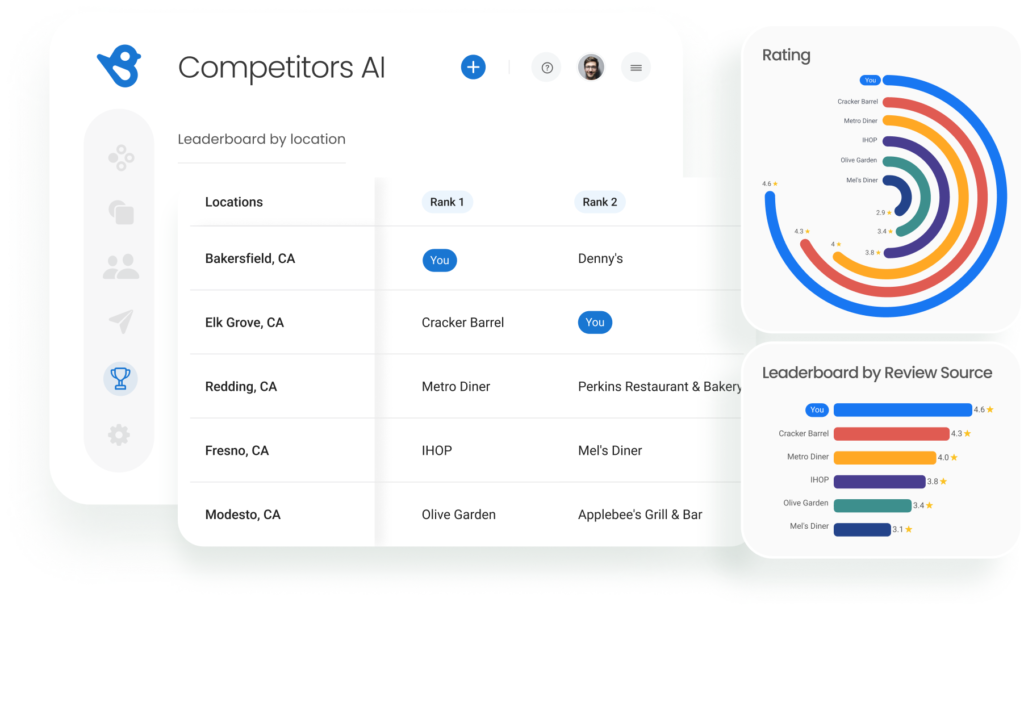
How Waterstone Mortgage uses Birdeye to fuel trust and referrals through attraction marketing
Waterstone Mortgage had a strong reputation offline but struggled to translate that into online trust. With over 200 loan originators across 56 locations, the company lacked a streamlined way of review management or showcase individual branch-level reputation. Their existing method—manual, paper-based surveys—resulted in poor response rates, delayed feedback, and lost referral opportunities.
This made attracting potential homebuyers through social proof, digital reputation, or local search difficult.

Solution
Waterstone implemented Birdeye’s suite of GenAI tools to build a digital-first reputation engine and:
- Automated review requests were triggered post-closing via integration with Encompass, helping originators collect Google, Facebook, and Zillow reviews effortlessly
- Birdeye’s business listings management and API empowered every originator to highlight reviews across their websites
- Surveys were automated to send 24 hours after loan funding, allowing Waterstone to quickly act on feedback
- Social AI capabilities helped loan originators auto-publish top reviews as branded posts on LinkedIn and Facebook
- Real-time alerts and reporting ensured faster follow-ups, insights, and monitoring across teams
- Track performance against industry peers and identify improvement areas across key experience themes
Results
- 380% increase in reviews for loan originators within the first year
- 338% growth in total review volume across the company
- 39% survey response rate, enabling faster CX improvements
- Faster feedback-to-action loops, boosting retention and referrals
- Stronger brand presence on review sites and social media platforms

FAQs about attraction marketing
Successful attraction marketing techniques include educational blogs, storytelling on social media, reviews-based posts, and lead magnets that provide immediate value, such as templates or checklists.
Quality content that addresses customer pain points answers common questions or solves a specific problem. Think: how-to posts, case studies, and user-generated content from real experiences.
Any business wants to grow through trust, not pressure. It’s especially useful for online businesses, coaches, multi-location enterprise brands, and service providers with a long sales funnel.
It depends on your consistency, audience targeting, and content type—but most see early engagement within 30–60 days. Over time, it builds authority and fosters long-term relationships.
Birdeye makes attraction marketing formula scalable and smart
When done right, attraction marketing works because it’s rooted in value, not volume. It replaces direct pitching with trust-building content that resonates with your target audience, brings in more qualified leads, and keeps your message consistent across every touchpoint.
That’s where the Birdeye GenAI platform comes in. Whether managing one brand or many, our online reputation management tools help you create and scale content and turn real feedback into fuel for future campaigns. You don’t need to guess what to post next or how to stand out—you just need a smarter way to execute the strategy you already believe in.
So, if you’re ready to attract more, sell less, and grow faster—Birdeye can help you build an attraction marketing engine that works as hard as you do.

Originally published









